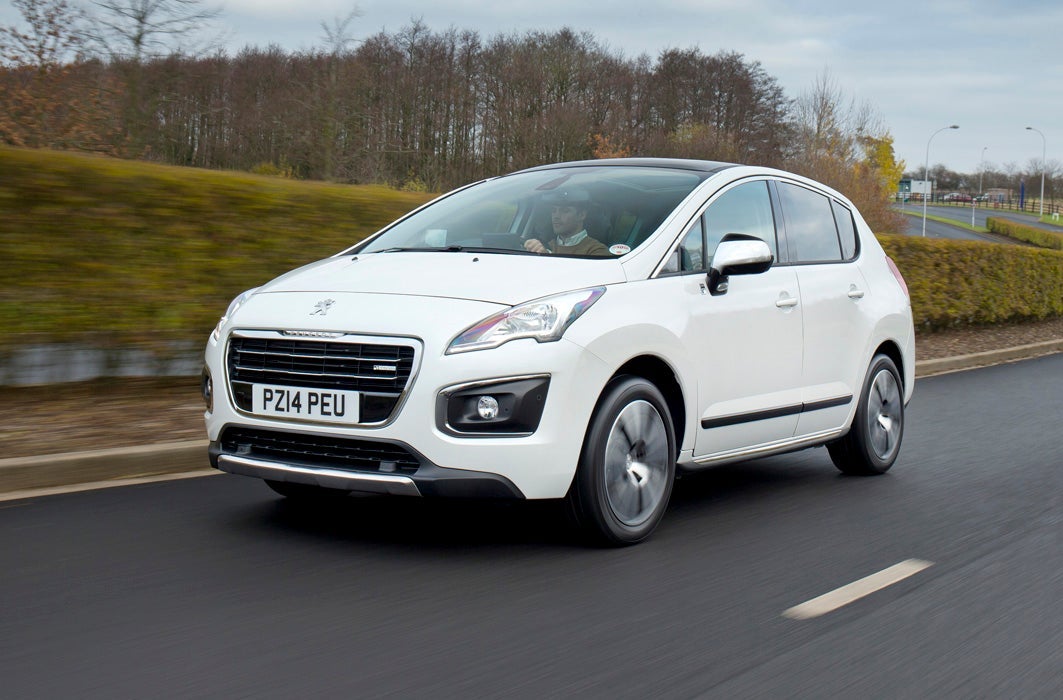Peugeot 3008 (2009-2017) Review
Written by Andrew Brady
Quick overview
Pros
- Very practical interior
- Good levels of standard equipment
- Fuel-efficient diesel engines
Cons
- Ride and handling are average
- A few quality niggles
- Weak base-spec VTi petrol engine best avoided
Overall verdict on the Peugeot 3008
"In this Peugeot 3008 review we are looking at a major player in the small SUV market. As a family car first and foremost it won a lot of fans when it was first introduced, and now that there are plenty of used examples to choose from it is proving to be popular once again. Choose the right engine and spec and you'll have a family machine that can cope with almost anything you can throw at it."
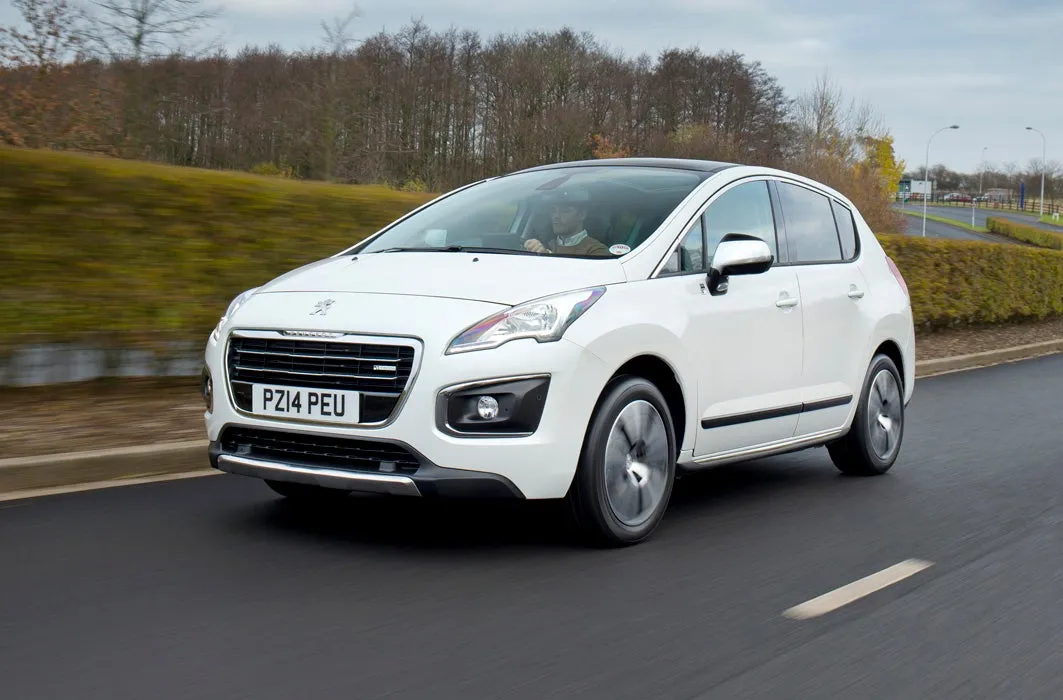
The Peugeot 3008 was a bit of a landmark car for the firm. Its first small SUV, Peugeot launched the 3008 a few years after the Nissan Qashqai, meaning it was well placed to capitalise on the rapidly growing popularity of SUVs. The Peugeot 3008 was an instant hit with car buyers and the company arguably hasn’t looked back.
It’s now a familiar formula. Take an existing family hatchback, build up a taller, bulkier and more rugged body shape, then stretch out the interior so passengers have more space and comfort – as well as the raised seating position that many love SUVs for. A bigger and more practical boot was a further bonus making this an ideal car for families with younger children.
Being based on the high-volume 308 meant Peugeot was able to offer a broad range of engines, including some very fuel-efficient ones. A downside of SUVs, particularly in this era, was their thirst for fuel. No such issues with the Peugeot 3008, which sipped petrol or diesel almost as slowly as the hatchback it’s based upon.
Here, we’re going to concentrate on facelifted cars from 2014 onwards. While earlier models are starting to look a bit dated, the subtle facelift brought a dose of modernity to the Peugeot 3008 that makes it look that bit more contemporary today. The crisp front and rear lights are stylish, the enlarged grille better follows the current Peugeot family look, and it bears a closer resemblance to the current model.
All Peugeot 3008s have a very welcoming interior, with a decidedly SUV-like feel. The dashboard is broad, with a raised-up centre console topped by a broad arm rest. It has the same sort of cues you find in a Range Rover, while the detailing is very premium and tactile. There are some beautifully-crafted toggle switches on the centre console and big, round instruments set within chrome-ringed cowls.
Most Peugeot 3008s have an infotainment screen that whirrs up out of the dashboard. While it’s located high up within clear sight, it’s a feature that dates the car. It simply isn't as large or clear as today’s systems.
Behind that commanding driving position, the Peugeot 3008 is roomy in the back – much more so than the somewhat cramped Peugeot 308 hatchback. It has a flat floor, a well-shaped seat that’s wide enough for three people, and plenty of headroom. The boot is well-sized too, far larger than a Peugeot 308 and we love the horizontally split tailgate.
All this is available at used prices that look very competitive. Even for a facelifted car, less than £5000 is enough to secure a diesel in entry-level spec, with lower-mileage first-generation 3008s in higher grades available in good numbers for less than £8000. That’s a lot of family-friendly car for the money. Read on for what you need to know about buying a Peugeot 3008.
If you're looking for the newer version, you need our Peugeot 3008 (2017-) review.
Is the Peugeot 3008 right for you?
Families flocked to the Peugeot 3008 because it was such a practical and spacious car. It was pricier than a regular hatchback, but the boost in interior room and flexibility was certainly worth it. This was a car that could grow with the kids, and prove to be very useful for things such as clearing out the garage and taking it all to the tip.
Who are we kidding? People loved the Peugeot 3008 first and foremost because it looked like an SUV and had a feelgood, raised-up seating position. Plus that super-smart interior. That it was roomy was an added bonus – more important was that it didn’t cost much more than a normal hatch to run. The results: SUV vibes without blowing the family budget.
Such value for money is enhanced further on the used car market. That’s why this generation of Peugeot 3008 is still so popular today.
What’s the best Peugeot 3008 model/engine to choose?
As mentioned, the best Peugeot 3008 is a facelifted version, which went on sale in early 2014. These have the more pronounced grille at the front, incorporating a ‘PEUGEOT’ script below the badge on the nose. Diesel engines dominated the line-up and are still a decent choice today being smooth and punchy.
The turbocharged 1.2-litre Puretech engine that arrived with the facelift is an excellent alternative, though. Replacing the gruff, lethargic 1.6-litre VTi petrol engines of old, the new downsized turbo motors still feel good today, offering decent refinement, good economy and surprising pulling power through the gears.
Peugeot 3008 Access trim is basic: Active should be your bare minimum, but we’d err towards Allure, which has a very good standard spec indeed.
What other cars are similar to the Peugeot 3008?
The Nissan Qashqai was the pioneer in this sector, although the first generation car is looking pretty dated these days. The 2014 second-generation model is a much sterner competitor to the Peugeot 3008. An early cult crossover favourite was the Skoda Yeti, while the Volkswagen Tiguan also gained a strong following.
Other alternatives include the Ford Kuga, the good value Hyundai ix35 and the well-built Kia Sportage. We's also add the Toyota RAV4 and Honda CR-V to the list.
The Mazda CX-5 is a stylish rival and the Renault Kadjar was a belated challenger from French arch-rival Renault.
Comfort and design: Peugeot 3008 interior
"One big draw of the Peugeot 3008 is its commanding cabin. It’s different to the norm and feels a step up over something like a regular 308. The high seating position instantly appeals, and Peugeot has shaped the dashboard to feel particularly commanding; the top of it stretches deep into the windscreen, and the centre console has a very sporty angle to it. Drivers will feel a sense of authority behind the wheel, cocooned between the high centre console and broad, comfortable armrest."
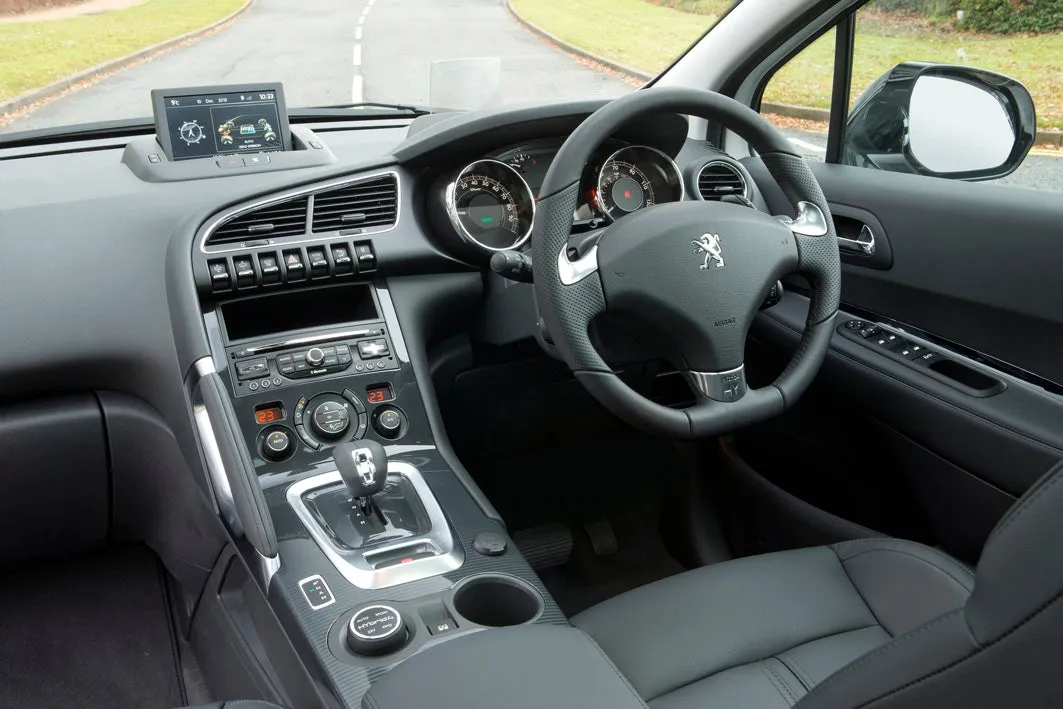
There are aircraft-inspired design cues throughout. We love the toggle switches in the centre console, the stitched grab handle further down and, on some models, the smart head-up display atop the instrument binnacle. This beams information onto a clear screen and, on facelifted cars, became a colour display. It’s great for easy sat-nav directions at a glance, plus other functionality.
Because the seats are mounted high, those in the front enjoy a good view out, adding to the sense of comfort. The seats themselves are firm and supportive rather than soft and spongy plus there’s a good amount of adjustment – even if some of the levers are a bit fiddly.
We love the big round instruments, which are super clear and, like the rest of the Peugeot 3008 cabin, beautifully lit at night. This is a very relaxing place to be for long-distance driving in the dark.
Quality and finish
Quality is good in places, but perhaps a bit patchy overall. We have no complaints about the top half of the dashboard, which has a very premium appearance. The plastic is soft-touch and low-sheen, and the details within are extremely upmarket – the chrome-ringed air vents, for example, and the tiny chrome inlay set into each toggle switch on the centre console. We like the polished trim further down, which is set off by that lovely stitched grab handle (itself mounted within a polished aluminium-style carrier).
As you move further down, though, cheaper plastics start to reveal themselves. It’s scratchy in places and the detailing in the footwells is a bit ugly. Some of the switchgear also feels cheap – the remote stereo and cruise controls are very dated (surely they were first seen in the 1990s?) and the column stalks also feel flimsy.
The Peugeot 3008 is not immune from a few rattles on the move either, so take a test-drive to judge how solid that particular car feels.
Infotainment: Touchscreen, USB, nav and stereo in the Peugeot 3008
Base-spec Peugeot 3008s didn’t get any form of infotainment system. They merely have a basic stereo with CD player (remember those?) in the dashboard. With a decidedly ugly and dated display that glows red, it’s very noughties.
However, even where fitted, the Peugeot 3008’s infotainment system looks its age. It’s basically more than a decade old, and it demonstrates this with simple graphics and a fiddly nature. You even have to control it via an awkward knob on the stereo unit itself, rather than via a dedicated dial.
It’s involved to use, and early sat nav systems didn’t even accept full-digit postcodes. Later versions did have a basic form of smartphone pairing, so you can play podcasts or stream music, but there’s no Apple CarPlay or Android Auto. It’s best to simply accept the 3008’s infotainment is dated and off the pace, and consider the car on its other strengths instead.
Space and practicality: Peugeot 3008 boot space
Interior space and practicality are as good as the infotainment is lacking. There are no complaints up front, save for a driving position that feels a bit too van-like. Later crossover SUVs have a more natural driving position, but this era of Peugeot 3008 still feels a bit too influenced by the MPV people carriers it eventually replaced.
Rear-seat space is extremely good. There’s plenty of room for two adults, with headroom in particular abundance. If those in the front try to offset the MPV-like feel by sliding back their seats, kneeroom may be a bit restricted, but with just a little compromise, the Peugeot 3008 will be a comfortable machine for four adults. Maybe even five: the cabin is wide and there’s no central transmission tunnel to eat into space for feet.
Rear visibility isn’t great, which makes it a bit tricky to reverse. You’ll be reliant on the parking sensors, where fitted – we reckon they’re a must-have.
We really like Peugeot’s cool split tailgate: the top half raises up on gas struts, just like a normal hatch – and if you want a completely flat opening, you can flip the bottom half down as well. It’s just like the set-up in a Range Rover, and you can even sit on the bottom half of the boot – perfect for impromptu picnics.
The boot also has a clever three-level floor, which is a thoughtful design touch. In its maximum-space setting, there’s a huge 512 litres of space in there, which is bigger than some estate cars, never mind alternative family hatchbacks. Fold the seats down and it extends to 1604 litres, which again is a serious amount of space that really bolsters the Peugeot 3008’s practicality credentials. Neat details include a removable courtesy light you can use as a torch.
The Peugeot 3008 has dual ISOFIX mounts for child car seats in the rear, and its tall door openings mean it’s easy to plonk children in and lift them out again. There’s no Isofix for the front passenger seat, though – and it lacks an airbag cut-off switch.
The Peugeot 3008's dimensions are 4365mm long, 2113mm wide and 1639mm tall.
Handling and ride quality: What is the Peugeot 3008 like to drive?
"Peugeot focused on comfort with the Peugeot 3008 and its ride quality still stands up today. It’s pliant over bumps, soaking up harshness and doing a good job of isolating passengers from rough roads. The ample, high-set seats also play a part here, too – you sense they further help absorb the scars that so many road surfaces suffer from."
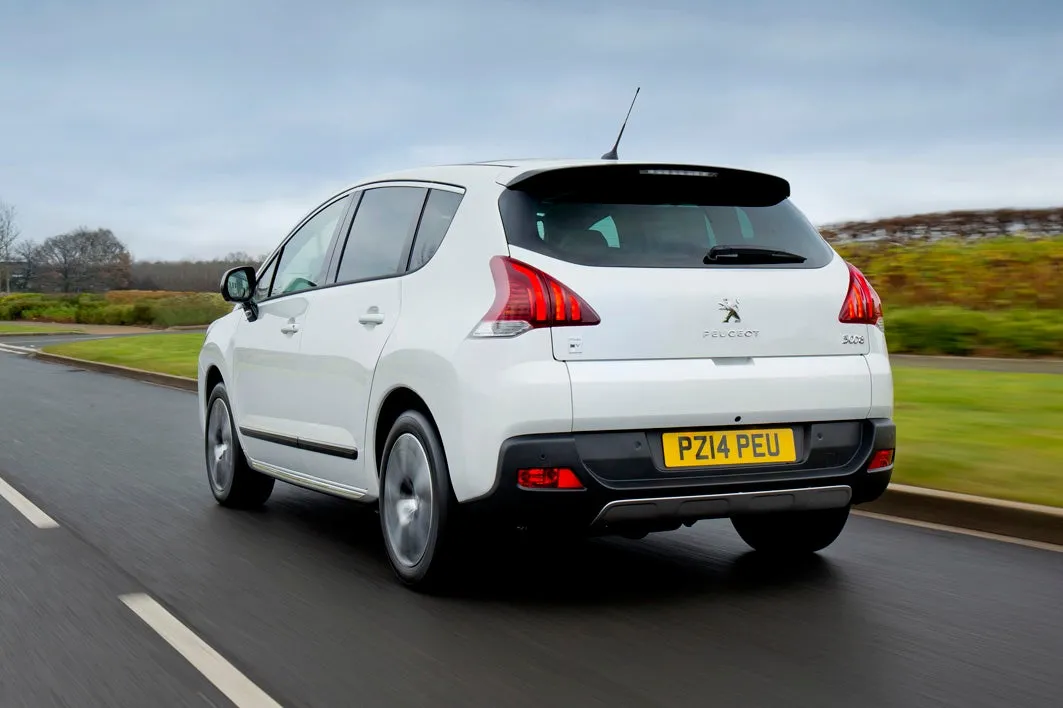
The handling isn’t bad, either. The Peugeot 3008 doesn’t roll too much through corners, so can be threaded through twisty sequences without jostling passengers from side-to-side. Grip levels are pretty good and it’s certainly more than adequate for the sort of driving most owners will expect.
Steering feel isn’t so good, mind. It doesn’t deliver that much feedback to the driver, so there’s less encouragement to engage in swift cornering. But then, as we say, it’s hard to be critical about numb steering in a car with such a passenger-focused remit as this. What’s more of a criticism is the oddly heavy weight of the steering at times.
Finally, if you like your Peugeot 3008 with large alloy wheels, be prepared to accept a few compromises in terms of ride comfort. The shallower tyre sidewalls are not as good at soaking up surface harshness, so they will feel a bit more irritable than other models.
What engines and gearboxes are available in the Peugeot 3008?
The best all-round engine offered in the Peugeot 3008 is the 1.6-litre diesel, originally called e-HDi but known as BlueHDi after the facelift. It’s smooth and relatively clatter-free, with a responsive nature and ample power for the sort of everyday motoring a Peugeot 3008 is likely to see. You might think it a little underpowered when fully laden at higher speeds, but otherwise it’s a good all-rounder.
We prefer the 1.6-litre diesel to the bigger 2.0 motor, which is gruffer and more gravelly. It delivers more oomph, but isn’t as nice to use, and doesn’t feel as pleasant around town.
Facelifted Peugeot 3008s also feature much-improved turbo petrol engines. The 1.2-litre Puretech is a three-cylinder design, and is extremely smooth and free-revving. With up to 130PS, it’s surprisingly responsive and a lovely option for town use. We much prefer it to the non-turbo 1.6-litre VTi petrol, which is noisy and slothful. The latter doesn’t even have a six-speed gearbox – the only 3008 to lack one.
There is also a hybrid version of the Peugeot 3008. But the Hybrid4 is curious. It pairs an electric motor with a 2.0-litre diesel engine, giving a short burst of pure electric running before the engine kicks in. The ‘4’ indicates it is all-wheel drive – the electric motor drives the rear wheels – but we’re still not convinced by it. The fact it only comes with the nasty EGC automatic gearbox does it no favours, either.
Rather like its steering, the Peugeot 3008 has a gear change that’s on the heavy side, and the shift has a long throw. But don’t be tempted to go for an automatic instead: the EGC auto ’box is dim-witted and slow, leading to a nodding-dog effect for passengers as it constantly tries to work out its shift strategy.
All Peugeot 3008s have an electronic handbrake controlled by a button on the centre console. It’s much easier to use than a traditional handbrake lever, particularly for hill starts.
Refinement and noise levels
The Peugeot 3008 is a large and well-isolated car that does a good job of keeping road and wind noise at bay. So long as you steer clear of the 18-inch wheels, it doesn’t make too much of a racket at speed, so long trips are pretty painless. The door mirrors don’t whistle too much either and it’s easy for everyone inside to chat to one another.
It’s the diesel engines that will be quieter for longer – they have more pulling power so you can keep them in a higher gear and let the engine do the work, rather than changing down and revving them loudly. That’s certainly something you have to do with the 1.6 VTi petrol, which is why the turbocharged 1.2 Puretech is so preferable.
The Hybrid gives a degree of silent electric driving, but this is soon contrasted by the clattery start-up of the diesel engine. It’s a strange combination – we can’t help but think how much better it would be with the Puretech motor.
Safety equipment: How safe is the Peugeot 3008?
It was way back in 2009 that Euro NCAP crash-tested the Peugeot 3008. Safety standards have come a long way since then, so although it was awarded a five-star score, bear in mind this is assessed to standards more than a decade old. The tests are much stricter now.
Even so, the Peugeot 3008 got 86% for adult occupant protection and 81% for child occupant protection. Safety assist (for active safety features) was excellent, with a 97% score. But far less impressive was the paltry 31% awarded for pedestrian safety.
The Peugeot 3008 features front and side airbags, but no knee airbags, and its chest airbags only cover the front seats. The head airbags do go from front to rear, as do seatbelt load limiters, but only the front seats have pretensioners.
There’s no airbag cut-off switch for the passenger seat as standard, although a seatbelt reminder is fitted to all five seats. Stability control is standard and a speed limiter was optional, but most Peugeot 3008s had one as part of the cruise control system.
Another safety aid is the head-up display fitted to posher models. This stops the driver’s eyes from having to flick around the dashboard to scan for important information. It’s all presented on a neat-looking screen in their line of sight.
MPG and fuel costs: What does a Peugeot 3008 cost to run?
"Post-facelift Peugeot 3008s are generally all fuel-efficient machines. The choice 1.6-litre BlueHDi returned an excellent 68.9mpg on the combined cycle, although this is according to the older NEDC fuel economy test, so you shouldn’t expect to achieve that in practice. At least stop-start is standard, helping improve in-town economy."
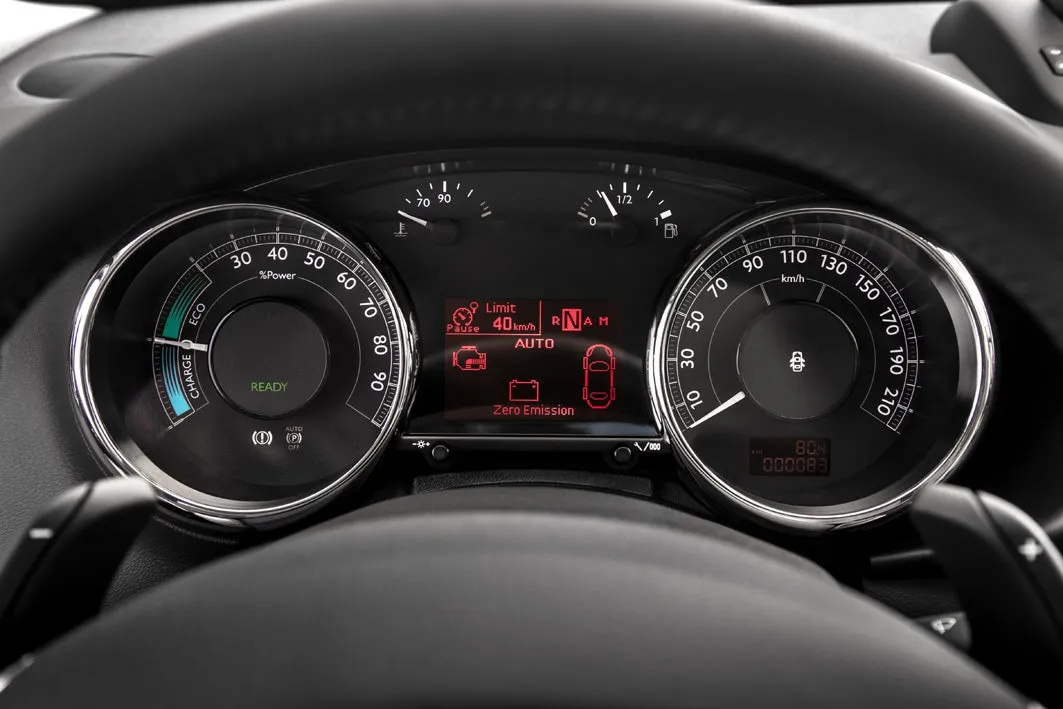
The 2.0-litre BlueHDi is strong too, with combined economy of 67.3mpg, while the 1.2-litre Puretech petrol was rated at 54.3mpg. The Hybrid4 does deliver excellent fuel economy, despite being all-wheel drive, averaging almost 75mpg. However, we’re not sure the compromises are worth it.
How reliable is the Peugeot 3008?
The Peugeot 3008 scored a very middling 8.89 out of 10 for reliability in the HonestJohn.co.uk Satisfaction Survey, which is better than some Peugeots but much worse than others. The most common reports of issues with the Peugeot 3008 are around the electrical system, so a main dealer service history is highly recommended.
Peugeot as a brand didn't fare particularly well either, being placed 24th out of 30 manufacturers in the same survey.
Insurance groups and cost
Peugeot 3008 insurance groups are a fair bit higher than the Peugeot 308. A diesel-engined Allure, for example, starts from group 16 (out of 50), with the Puretech petrol in group 19. This makes the 2.0-litre BlueHDi 150 seem pretty competitive in group 21. If you’re trading up from a hatchback, perhaps get an insurance quote beforehand, to make sure there are no nasty surprises.
The Pegeot 3008 Hybrid4 will be on the pricey side, thanks to a group 26 insurance rating. Some versions were higher still, making it the least competitive 3008 in terms of cover costs.
VED car tax: What is the annual road tax on a Peugeot 3008?
The Peugeot 3008 Hybrid4 has sub-100g/km CO2 emissions, so is zero-rated for VED (road tax). But even the 1.2-litre Puretech petrol isn’t bad, costing £135 a year, while the 1.6-litre BlueHDi starts from just £20.
Pick the right 2.0-litre HDi and it will cost £20 a year, too. Other versions are pricier, particularly the automatics. If you’re looking for another reason to avoid the base 1.6-litre VTi, here’s one: it costs £220 a year to tax.
How much should you be paying for a used Peugeot 3008?
"Less than £5000 is sufficient to buy a post-facelift Peugeot 3008 with the sweet 1.6-litre BlueHDi diesel engine. There are even some 2014 cars available from official Peugeot dealers under the manufacturer-approved scheme. If you’re scanning the classifieds, make sure you’re looking at a facelifted model from its chrome grille surround, plus the little indents in the bottom of the headlights."
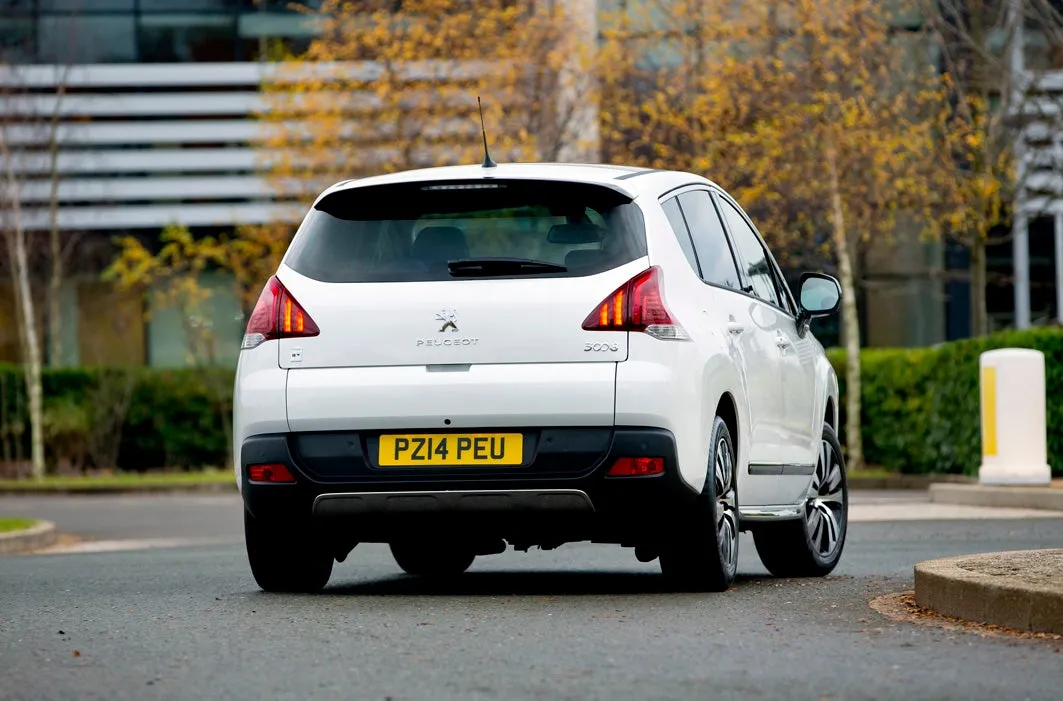
An £8000 budget will buy a 2016 car, again likely to be a 1.6-litre diesel, and at this level, we’d look for Allure trim as it contains plenty of features as standard. For a 1.2-litre version, you need to spend more: bank on around £10,000, although this will get you one of the latest 2017 first-generation 3008s, again in appealing Allure trim.
If you want a petrol engine, though, you must be patient. Diesel models far outnumber them on the used market. Peugeot Approved Used cars make a lot of sense if you want reassurance when buying second hand.
Trim levels and standard equipment
Even entry-level Peugeot 3008 Access models have a decent amount of standard equipment, with alloy wheels, all-round electric windows, LED running lights, air conditioning and the electronic parking brake with hill-start assist.
Peugeot 3008 Active grade is better looking, with a colour-coded exterior, leather steering wheel, rear parking sensors, auto lights and wipers, folding door mirrors and front fog lights.
Peugeot 3008 Allure has an even more sparkling exterior, with aluminium trim highlights, 18-inch alloys, front parking sensors, a rear parking camera, sat-nav, dual-zone climate control, a panoramic glass roof and the head-up display. Rear-seat passengers will also like this grade, as it comes with slide-up sun visors hidden in the rear doors. Perfect for pretending to be a celeb.
Later on, there was also a Peugeot 3008 Crossway variant, with distinct styling outside and in, plus standard xenon headlights.
Ask the heycar experts: common questions
What problems does the Peugeot 3008 have?
How reliable is the Peugeot 3008?
Which Peugeot 3008 is top of the range?
Get our latest advice, news and offers
Keep me updated by email with the latest advice, news and offers from heycar.
By submitting you agree to our privacy policy
